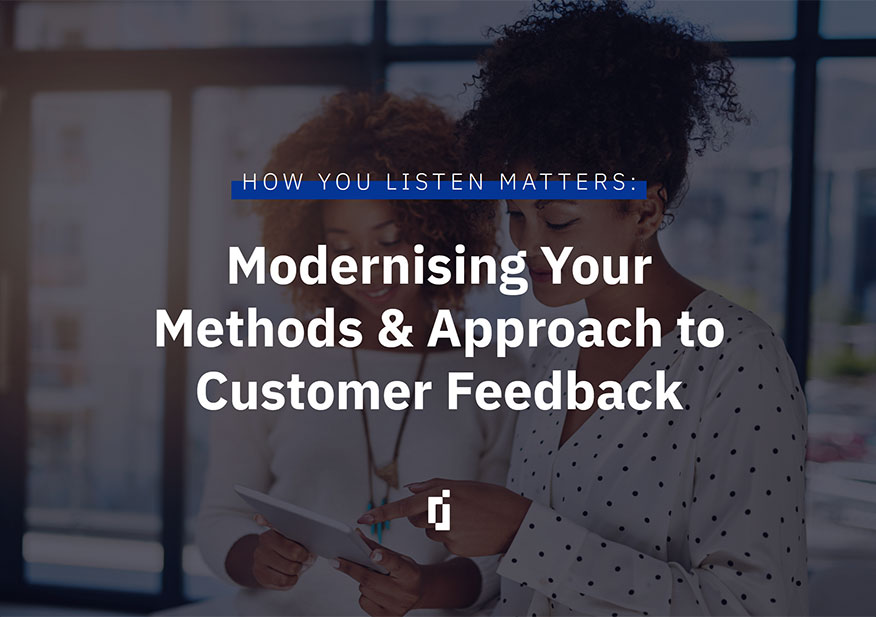Enterprise Feedback Management (EFM) makes survey data readily accessible and actionable to a company’s employees—from the front line to the C-suite.
Enterprise feedback management is similar to customer experience management (CXM), but whereas EFM focuses just on dealing with customer feedback, CXM uses all aspects of a customer’s experience, from feedback to transactional data to retention rates. Both can be used at the enterprise level to enact productive change.
Enterprise feedback management can also be confused with customer relationship management (CRM). EFM is focused on the customer’s relationship with the company. CRM focuses on the company’s relationship with the customer. CRM programs are designed to help company leaders understand, anticipate, and respond to the needs of a company when working with and growing their customer base. Voice of the customer (VoC), case management, and service recovery are three tools that fall into the toolboxes of both EFM and CXM.
EFM tools are not just pieces of evaluation software—it’s a way of doing business that goes hand-in-hand with a customer-centric culture. The implementation of creating this type of culture requires a demonstrated commitment of leadership, resources, and processes. The following elements are the main tactical levers you should use to ensure that an EFM implementation is successful:
- Senior management commitment and involvement
- Compensation and reward structures
- Recognition and appreciation
- Employee engagement
- Alignment and communication
- A structured process for using and acting on customer feedback
- Coaching and training

E-BOOK
How You Listen Matters: Modernising Your Methods & Approach to Customer Feedback
Learn how to evolve your approach to customer listening, optimise tried-and-true feedback methods, and leverage modern methods to meet your customers where they are.
Why Use Enterprise Feedback Management (EFM)?
A well-designed, properly executed EFM solution provides numerous benefits, but is especially useful in helping you understand your relationships with customers, employees, partners, suppliers, and others, regarding key issues and concerns, as well as noteworthy positive feedback. Some specific examples of the benefits of EFM include:
- Enabling real-time, customer-driven response.
- Understanding the key drivers that keep customers returning.
- Pinpointing specific store/team/employee training needs.
- Ensuring service-lapse recovery – fixing problems so they don’t recur.
- “Saving” customers (and their lifetime value) before they permanently defect.
- Compensating employees based directly on customer measurements.
- Providing integrated reporting of all feedback, from all “moments of truth.”
- Linking satisfaction to loyalty to financial results.
- Driving consistency across the organisation by sharing results widely.
Robust EFM systems provide additional benefits by allowing companies to leverage data across departments. For example, transactional surveys can be augmented with additional market research-oriented questions, thereby saving time and resources.
EFM software makes survey data readily accessible and actionable to a company’s employees—from the front line to the C-suite. Marketers and sales reps can collaborate on projects and share insights that impact the bottom line. The supply chain can be optimised, and relationships with other companies that impact the product can become more effective. An EFM system keeps feedback data organised so that it goes to the right people within the company when they need it.
These can help companies to improve customer loyalty and reduce negative feedback received, resulting in increased profits, and NPS score.
Other benefits of utilising EFM software come from understanding the opinions and needs of customers, which can help companies to provide exactly what customers want. From customer feedback, companies can gain insights on the desirability of their products and potential improvements to be made.
EFM software is also used to fix lapses in customer service. Using tools such as case management and advanced analytics, EFM implements service recovery concepts to retain customers. This ensures that customers are always helped before they get frustrated and take their business elsewhere. Using website feedback applications called customer feedback management services, companies can collect user suggestions and complaints from their web pages. Effectively using EFM helps companies improve and understand what keeps customers coming back.


